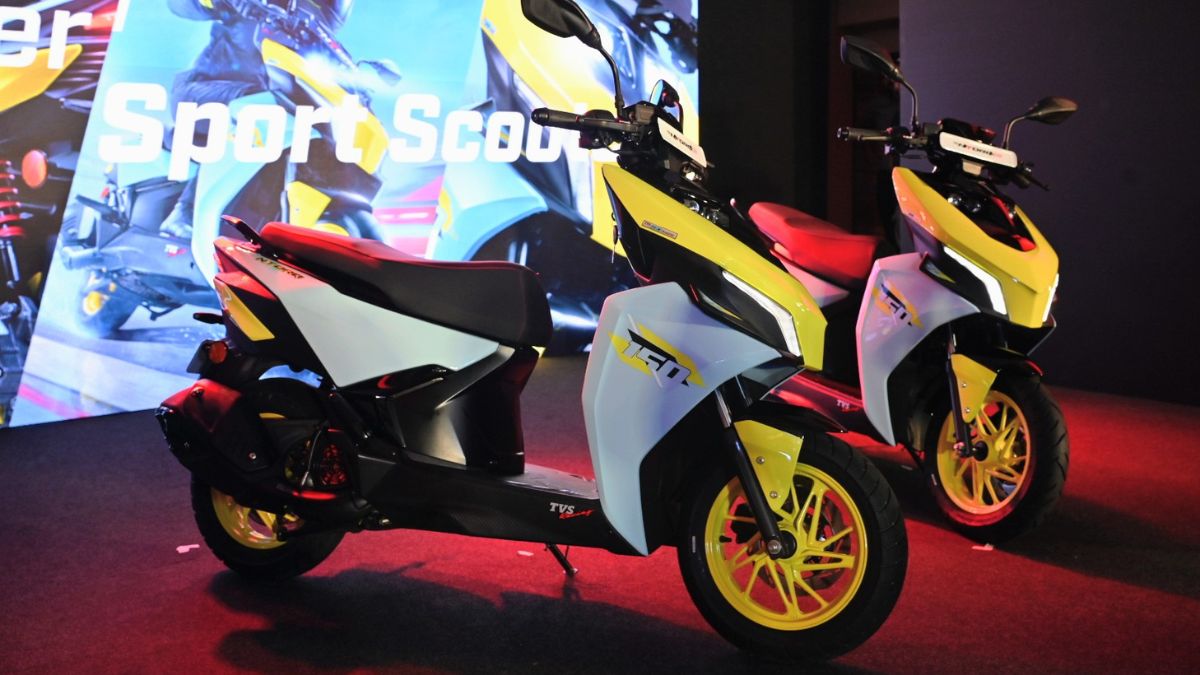Scooter and two-wheeler makers like TVS may see the best festive season in years: Here is why
 From the TVS Ntorq 150 launch in Mumbai | Amey Mansabdar
From the TVS Ntorq 150 launch in Mumbai | Amey Mansabdar
Two-wheeler sales peaked in India in the 2018-19 financial year, but over six years later, they still remain below those levels. Sales have been particularly slow in the last few months, hurt by rising costs and the early onset of monsoon rains. The recently announced GST cuts could change that, with industry officials anticipating this to be the best ever festive season in some time.
A little over 2.11 crore two-wheelers were sold in India in the year ended March 2019, according to Society of Indian Auto Manufacturers (SIAM). In the year ended March 2025, that figure stood at 1.96 crore.
In the April-June quarter of this year, two-wheeler sales declined over 6 per cent to about 47 lakh units. Rising prices due to raw material costs as well as regulatory changes over time have impacted demand for two-wheelers, especially in the entry-level segment. Unexpected heavy rains in May this year also affected rural sales.
The GST council last week approved a complete revamp of the Goods and Services Tax, which will see it simplified into two major slabs of 5 per cent and 18 per cent, and a few luxury sin goods charged 40 per cent. Two-wheelers below 350cc engine capacity will now attract 18 per cent GST, versus 28 per cent earlier.
This reduction, with a broad-based tax reduction across most daily necessities, should leave more money in the hands of consumers, which in turn should drive demand, said experts.
"This year, we are looking forward to what is possibly going to be one of the best festive seasons," said Aniruddha Haldar, SVP and Head of Commuter and EV business at TVS Motor Co., "This (GST cut) is not limited to one industry. And more importantly, it is the kind of sentiment that [GST reforms] bring—I'll have money in my pocket. That kind of positivity then gets channelised to assets, which become conspicuous in festive buying, especially in automotive."
TVS has continued to gain market share in scooters, with its Jupiter petrol scooter and IQube electric scooter finding strong traction.
ALSO READ | GST effect pushes Mahindra, Tata Motors, Bajaj Auto, Hero MotoCorp shares up
"We had seen over the previous 6 years due to various kinds of reasons, the cost of acquisition of two-wheeler has gone up by 40-50 per cent due to various regulations that have come in. This is a huge reset on that," Haldar added on the GST cuts.
The company last week unveiled its latest scooter, Ntorq 150, which targets those who want a sporty two-wheeler. The scooter, which can go from 0-60 km in about 6.3 seconds and has several segment-first features like ABS and a traction control system, race and street mode, a TFT screen with over 50 connected features, is priced at Rs 1.19 lakh ex-showroom. The price is pre-GST cut, so the prices will come down from September 22.
According to Haldar, this segment has been the fastest-growing. While two-wheeler sales have clocked a 2 per cent compounded annual growth in the last few years, scooters have grown three times faster, and sporty scooters have grown six times faster.
Buoyed by the stronger growth, scooters (including petrol and electric) now account for 39 per cent of the total two-wheeler industry. Haldar expects that trend to only gather momentum.
"As our infrastructure improves, as urbanisation improves, as the participation of women in the workforce improves, all of that is pointing towards a much stronger scooterised environment on the Indian road," he said.
ALSO READ | Planning to buy a small car? Here is how the new GST rejig saves you Rs 45,000 to Rs 1 lakh for hatchbacks like Maruti Suzuki Swift
TVS has already been leading the sporty scooter segment, which accounts for around 1 lakh units in the industry, and Haldar is confident of strengthening that share with the Ntorq 150.
TVS has also rapidly accelerated in the electric scooter space, gaining the top spot for the last five consecutive months. It recently launched the new Orbiter electric scooter targeting everyday commuters, and is priced at Rs 99,900 ex-showroom.
"We ensure that we keep track of our consumers and keep offering relevant offerings in each significant emerging consumer segment... With this Diwali bonanza that has come in the form of GST (cuts), we are very buoyant about this year going forward," stressed Haldar.
Credit ratings agency Crisil has said that the GST cut will lead to demand rising 200 basis points (2 percentage points) from earlier. It sees two-wheeler sales volumes rising 5-6 per cent in the current financial year.
With the GST cut fully passed on, two-wheeler prices are expected to reduce by Rs 3,000-7,000, according to Anuj Sethi, senior director at Crisil Ratings.
"With the rate cut coinciding with the Navratri and the festive season, sentiment would get a timely boost. Coupled with new launches, softer interest rates and improved affordability, this should drive a stronger second half for the automobile sector," he said.
A reduction of GST on entry-level motorcycles and scooters would significantly improve affordability, especially in the 100–125cc commuter segment, which caters to price-sensitive buyers, according to Shridhar Kallani of Axis Securities.
Market leaders such as Hero MotoCorp, Bajaj Auto, and TVS Motor stand to gain directly from this reform, as volume recovery in rural and semi-urban markets could accelerate meaningfully from the second half onwards, he said.
Business